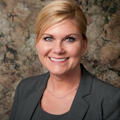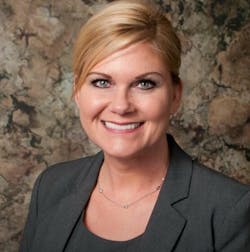In our monthly Fraud Blotter column, dental fraud experts Jean Patterson, Sandy Baird, and Teri Dervenis present real cases of dental fraud and current perspectives on dental fraud prevention. In this article, Dervenis looks at how a dental practice can rebuild in fraud's aftermath—and what other practices can learn from those affected.
Certain occupations are inherently more dangerous than others.But whether you are a dentist, lawyer, or business executive, your business can become a target of employee fraud. When fraud does occur, what happens next? How will you feel? And as the business owner, what should you do? In this article, I'll share some thoughts about rebuilding in the aftermath of dental fraud. Specifically, I'll focus on the elements of team-building that should take place. My advice also will be useful to dentists who haven't been stricken by fraud—yet—to help them understand the importance of implementing fraud-prevention measures.
Your practice—postmortem
The aftermath of fraud can be described as postmortem-like. When fraud occurs, the credentials that follow your name are irrelevant. You will feel like your practice is an airplane that just took a nose-dive into the ground. After the yellow tape comes down, the work begins rebuilding your team. But your team members will be in shock. Just like you, they worked with the formerly trusted employee for years, and now they are mourning the loss.
Leadership 101 dictates that you focus on rebuilding existing relationships. As a team, you should learn from one another about what is working, what isn't working, and what needs improvement. Revisiting your mission statement with your team is an excellent first step. (Or, creating one if you don't have one.) Print the mission statement out, give a copy to each team member, and review it. Ask team members to critique the statement. Encourage discussion about change. (I can assure you—there will be change.) Be very aware at this moment why you are in business. Remind yourself and your team of your objectives as a practice and add new objectives to the mission statement. Put a spotlight on the culture that makes up your business.
Now is the time to review employee roles and responsibilities. Are there employees who want more responsibilities and who deserve them? Rewarding quality employees with an earned increase or newly added responsibilities can positively impact office culture. Take this time to close the relationship gap between you and your current team—this is vital.
As you move on, communicate, communicate, communicate. Step outside your comfort zone. Discuss and reaffirm your mission statement often. When you communicate to your team, have precise intentions. Your team has potential, but it is capable of failure without leadership, so continue communicating. Ask questions that provide answers about how to successfully rebuild.
Understand the personality of each team member, and let them know who you are as well. This can be supported by taking the DISC test. The test measures four dimensions of behavioral styles: decisive, interactive, stability, and cautious. Once profiles are complete, have fun with the results. You will learn more about each other—not from the test alone, but from conversations that result from the test. Most employees will appreciate that you have taken time to get to know them.
As you team comes back together, employees will ask for more job opportunities. Great employees will ask to see your employment manual, code of conduct, and policies and procedures documents. Studies in Maslow’s Theory suggest that employees will progress in showing that they want a safe working environment. (1) They will want an employer who builds self-esteem, who provides a sense of belonging, and who supports them in achieving their full potentials. Show that you care for your patients, employees, and your business by keeping updated on the latest trends in HR, fraud prevention, and the dental industry.
Hiring a new team member and retaining them can be a challenge both to the dentist-owner and members of the team. Prepare for a future team member who is armed with knowledge and wants polished opportunities. Show potential hires that your practice is ready to take on a talented professional.
Be the pilot of your practice
As a dentist-owner, you know the profession you have chosen. You have also accepted a level of risk associated with being in business. Your responsibilities of preventing fraud are similar to those of a pilot responsible for the safety of his or her passengers. No pilot would take off with only minimum fuel in the plane...and then tell the passengers when they are up in the air. But you are doing the same thing by taking the minimum steps to prevent fraud. Whether you realize it or not, you are sending messages about the vulnerability of your business. If you say, "We use one username and password to log in," or "No worries with us—we use Mac's here," you're telling your team that your running your business on fumes.
Instead, your communications should be as precise as a pilot's communications to aircraft control. Fuel your practice with robust systems to mitigate the risk of your practice faltering. If you are referring to your policies as a poster on the wall, you're not ready for takeoff. Implement the proper external and internal controls and ensure that fraud doesn't take down your practice—again. Remember, the aftermath of fraud begins before it takes place.
Author's note: For more information on DISC and how to efficiently implement procedures into your practice, please contact the author at [email protected]. For additional fraud-related inquiries and how to implement protective measures into your practice, contact the Teri Dervenis, Sandy Baird, MBA, or Jean Patterson, CPA, CFE.
References
1. Maslow AH. A theory of human motivation. Psychological Review. 1943;50(4): 370-396.
Teri Dervenis of Garrett Docs brings more than 30 years of experience in the dental profession. As a territory sales manager for Patterson Dental, Teri was known as an account advisor for 15 years, helping dentists make their vision a reality. Teri is an associate member of the ACFE and serves as secretary for the Indianapolis chapter. Contact her at [email protected].
Also by Teri Dervenis
More from the Fraud Blotter
True dental fraud: The lake house
The collateral damage of employee fraud
Behind the Fraud Triangle: Understanding the origins of embezzlement in dental practices
Editor's note: This article first appeared in the Apex360 e-newsletter. Apex360 is a DentistryIQ partner publication for dental practitioners and members of the dental industry. Its goal is to provide timely dental information and present it in meaningful context, empowering those in the dental space to make better business decisions.
Subscribe to the Apex360 e-newsletter here.
Dental news and press releases may be sent to Apex360 editors at [email protected]">[email protected].
For the most current dental headlines, click here.
About the Author

Teri Dervenis
Teri Dervenis has more than 30 years of experience in the dental profession. As a territory sales manager for Patterson Dental, Teri was known as an account advisor for 15 years, helping dentists make their visions realities. Teri is an associate member of the Association of Certified Fraud Examiners and serves as secretary for the Indianapolis chapter. Contact her at [email protected].
Updated April 10, 2018




